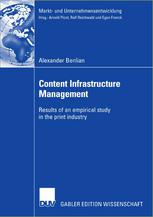

Most ebook files are in PDF format, so you can easily read them using various software such as Foxit Reader or directly on the Google Chrome browser.
Some ebook files are released by publishers in other formats such as .awz, .mobi, .epub, .fb2, etc. You may need to install specific software to read these formats on mobile/PC, such as Calibre.
Please read the tutorial at this link: https://ebookbell.com/faq
We offer FREE conversion to the popular formats you request; however, this may take some time. Therefore, right after payment, please email us, and we will try to provide the service as quickly as possible.
For some exceptional file formats or broken links (if any), please refrain from opening any disputes. Instead, email us first, and we will try to assist within a maximum of 6 hours.
EbookBell Team

5.0
68 reviewsBecause of the increasing digitization and modularity of content media companies are challenged to exploit the gained degrees of freedom in the management of their most valuable asset. Opportunities abound - reutilizing, bundling and pushing content through diverse media channels leading to higher returns on investment. Although many studies have tackled the problem of properly allocating data, processing power or IT-related decision rights in the past, the topic of media content allocation has been neglected so far.
Taking into account strategic, organizational and technological factors Alexander Benlian explores the question of whether to centralize or to decentralize media content. The findings basically emphasize the need to design publishing organizations that follow certain patterns of congruency and consistency in order to realize greater effectiveness. These observed patterns or invariabilities may provide infrastructure managers with a benchmark against which to reassess the design of their own content allocation configuration. Aligned content infrastructures can be considered to dramatically increase the smoothness of content flows and to enhance production and bundling capabilities.